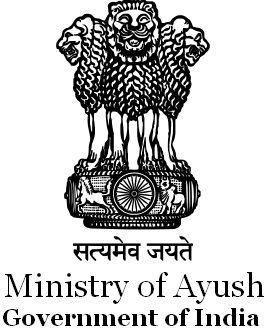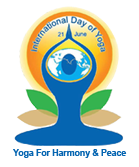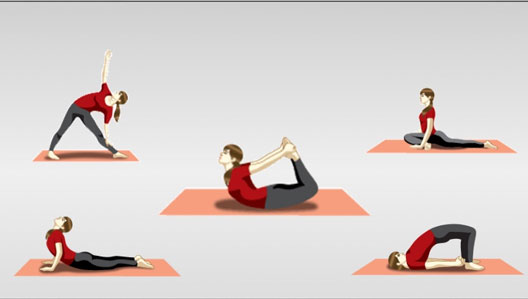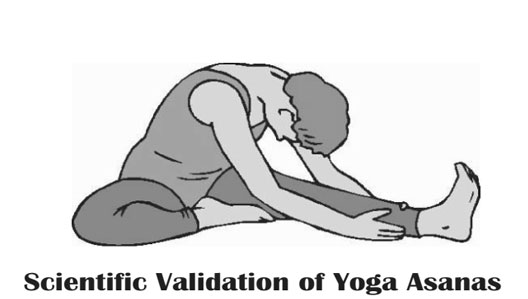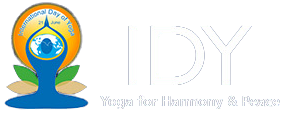Concept of Health and Disease in Yoga
2021-05-06
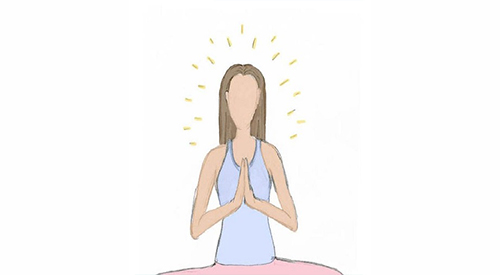
An Introduction to Yoga
Yoga is an ancient wealth of wisdom, which is a gift passed down to us from our ancestors from over five centuries ago. It is unfortunate that in today’s world this tradition of yoga is only confined to the practice of asanas or physical postures. Though in reality, the meaning of the word yoga encompasses so much more.
The word yoga is derived from the Sanskrit root word ‘yuj’, which means to unite. It symbolizes the union of the individual soul (jivatma) with the universal soul (paramatma). In other words, it enables a state of consciousness where the practitioner is in harmony with his or her surroundings.
According to an ancient text of yoga, the Pantanjali yoga sutras, yoga is said to be consisting of eight limbs:
Rules and observances (yama and niyama), postures (asana), breath regulation (pranayama), withdrawal of the senses (pratyahara), concentration (dharana), meditation (dhyana) and absorption into the supreme (samadhi).
The hatha yoga practitioners evolved additional techniques like cleansing procedures (kriya), gestures (mudra) and locks (bandhas).
The Concept of Health
The term ‘Health’ is an abstract concept which is hard to grasp. A fundamental question arises, “Can an individual who does not suffer from any disease be called healthy?”
In 1948, The World Health Organization (WHO) defined health as the state of complete physical, mental and social well-being and not merely the absence of disease or infirmity.
Health consists of physical, mental, social, vocational, moral, emotional and spiritual dimensions.
From this definition, it is evident that health is a dynamic and multi-dimensional state. And therefore, the achievement of optimum health is only possible by the use of a holistic approach which caters to every one of its dimensions. Yoga emerges as the perfect candidate for this purpose.
• Asanas (postures) and shat kriyas (cleansing procedures) improve the physical component of health.
• Dhyana (meditation) and dharana (concentration) improve mental health.
• Yama (discipline) and niyama (observance) are universal rules of morality and social conduct laid down by sage Patanjali. They are similar to modern principles of public health and community medicine.
• The practices of pranayama (breath regulation) and pratyahara (withdrawal of the senses) improve emotional health.
• Yoga also strongly advocates the importance of surrender to the almighty or ishvarapranidhana. This encourages the development of spiritual health in an individual.
Therefore, the conventional concept of optimum health can be achieved by the practice of yoga.
The Yogic View of Health
The knowledge of composition of the human body is inherently necessary for understanding the yogic concept of health. The structural aspect of a human body is derived from the ancient text of Taittareeya Upanishad. This text says that the human body is composed of five sheaths called as the pancakoshas.
Optimum health is said to be achieved when health is achieved at each of these five levels.
1. Annamayakosha or Physical body
The physical body is made of the manifestation of the five great elements or pancamahabhootas. These five elements are then further organized to form the seven basic tissues of the human body called as the saptadhatus. They include rasa (lymph), rakta (blood), mamsa (flesh/muscle), majja (bone marrow), medas (fat), asthi (bone) and sukra (semen).
2. Pranamayakosha or Energy body
It is predominantly made of energy channels running throughout the human body called as Nadis. These nadis are channels that facilitate the flow of the life force called as prana. There are said to be 72,000 nadis running throughout the human body adopting the path of least resistance. These nadis meet at certain energy centers of the body called as chakras and they are seven in number. The prana that flows through these nadis is of five types based on its functions (udana, prana, samana, apana, vyana), and they are further sub-classified into five upa-pranas (naga, koorma, krikara, devadatta, dhananjaya).
3. Manomayakosha or Emotional body
It consists of the three gunas or personality traits of an individual. Sattva, rajas and tamas. The overall personality of an individual is determined by the relative predominance of these three gunas.
4. Vijnanamayakosha or Intellectual body
This kosha is the faculty by which an individual is able differentiate the right from wrong.
5. Anandamayakosha or Bliss body
The awareness of this kosha only arises in certain deep yogic states. It is a state of ecstasy or bliss.
The Bhagavad Gita
The Bhagavad Gita defines yoga as follows:
Samatvam yoga ucyate (2.48)
The statement says that equanimity is yoga. This indicates that yoga enables a state of both physical homeostasis and mental equanimity. Yoga is a state of harmony where the body’s physiological functions are maintained and the mind remains in moderation, not overly reacting to either aversion or desire.
The Bhagavad Gita also enumerates mental health in great detail. A mentally sound and healthy individual is referred to as a sthitaprajna, which means a man of steady wisdom. The qualities of a sthitaprajna are elaborated in depth throughout the second chapter called as the Sankhya yoga. They include tranquility, situational stability, emotional stability, free from desires, complete self-control and oneness with brahman or knowledge of the ultimate.
The Hatha Yoga Pradipika
The physical characteristics of a healthy practioner of hatha yoga are explained in the second chapter of this classical text of hatha yoga. This text was authored by Swatmarama, who calls these characteristics as the ‘Hatha Yoga Lakshana’, said to appear after the practice of hatha yoga.
vapuhkrishatvamvadaneprasannata
nadasphutatvamnayanesunirmale |
arogatabindujayo’gnidipanam
nadivishuddhir hatha siddhi lakshanam ||(2.78)
Slimness of body, luster on the face, clarity of voice, brightness of eyes, freedom from disease, control over seminal ejaculation, stimulation of gastric fire and purification of nadis are marks of success in hatha yoga.
The Patanjali Yoga Sutras
A description of bodily perfection (kaya sampat) can be found in the Vibhutipada of the Patanjali yoga sutras.
rūpa-lāvaṇya-bala-vajra-saṁhananatvānikāyasaṁpat(4.46)
The perfection of the body includes beauty, gracefulness, strength, and adamantine hardness.
These qualities described are attributed to optimum physical health.
The Yoga sutras are an exposition on the skillful control of the mind. The concepts in the sutras are applied in the management of mental illnesses. The characteristics and steps to attain optimum mental health are also explained in great depth.
The Concept of Disease
Impairment of health, a condition of the body in which its optimal functioning is disrupted or deranged is called as disease.
The Patanjali Yoga Sutras
In Samadhi pada of the yoga sutras, a total of 13 obstacles in the path of Samadhi (antarayas) are described. Vyadhi or disease is one of them. This is in reference to physical illness.
Five kleshas or afflictions are are described in the sadhanapada. They are said to be the root of mental illnesses. They include ignorance (avidya), ego (asmita), desire (raga), aversion (dvesha) and fear of death (abhinivesha). Among these, ignorance (avidya) is said to be the root of all other afflictions.
The Yoga Vashishta
The yoga vashishta is a treatise on yoga that contains the teachings of sage Vashishta to Lord Rama. In this text, the concept of disease is explained as follows:
In the anandamayakosha (bliss body), an individual is healthiest with perfect harmony and balance.
In the vijnanamayakosha (intellectual body), there are movements but channelized in the right direction.
Imbalances start in the manomayakosha (emotional body). It is the root of all diseases.
These mental imbalances arise due to ajnana or ignorance. This leads to an imbalance in the thought process called as adhi.
The adhis manifest themselves as physical disease called as vyadhi.
The physical manifestation of the adhis can take three forms:
• Ajeernatva: indigestion or decreased activity of digestive tract.
• Atijeernatva: excessive functioning of the digestive tract.
• Kujeernatva: abnormal functioning of the digestive tract.
In Naturopathic philosophy, it is believed that the improper functioning of the digestive tract is the root cause of all diseases. In fact, “constipation is called the mother of diseases”. This statement supports that the causality of all diseases occurs through this progression of events, described above.
In conventional medicine, these are called as psychosomatic diseases. The psychosomatic theory of diseases is in fact a relatively new conceptin the field of conventional medicine. Whereas this theory was already well established in the ancient Indian texts.
• Adhi: psychic disturbance arising due to ignorance.
• Vyadhi: physical malady or illness.
• Adhijavyadhi: stress-borne psychosomatic illness.
• Anadhijavyadhi: somatic ailments like injury, infection, toxin etc… They are not stress-borne. The causes are external.
• Sara adhijavyadhi: Influenced by heredity. They are congenital disorders. This can only be destroyed by realizing the subtle states of mind or attaining Samadhi. In that state, man transcends the cycle of birth and death.
• Samanyaadhijavyadhi: These are not inherited.
• Upadhi: Self-imposed suffering.
The progression of symptoms in these psychosomatic disorders are said to occur in the following four phases:
1. Psychic phase:
Mild persistent psychological and behavioral symptoms.
Eg: irritability, disturbed sleep
2. Psychosomatic phase:
Appearance of generalized physiological symptoms.
Eg: hypertension, tremors
3. Somatic phase:
Disturbed function of organs, especially the weaker organs.
Eg: pre-diabetes, overweight
4. Organic phase:
Full manifestation of the disease accompanied by pathological changes. The organs may sometimes be irreversibly damaged.
Eg: peptic ulcer, cancer
In conclusion, it is evident that the holistic approach of yoga therapy targets total integrated treatment or management of an individual at all levels of being. It is therefore, the best way to achieve optimal health at a multi-dimensional level. In order to achieve the perfect harmonious state of the mind and body, yoga must not only be used as a therapy, rather it must be adopted as a way of life.

